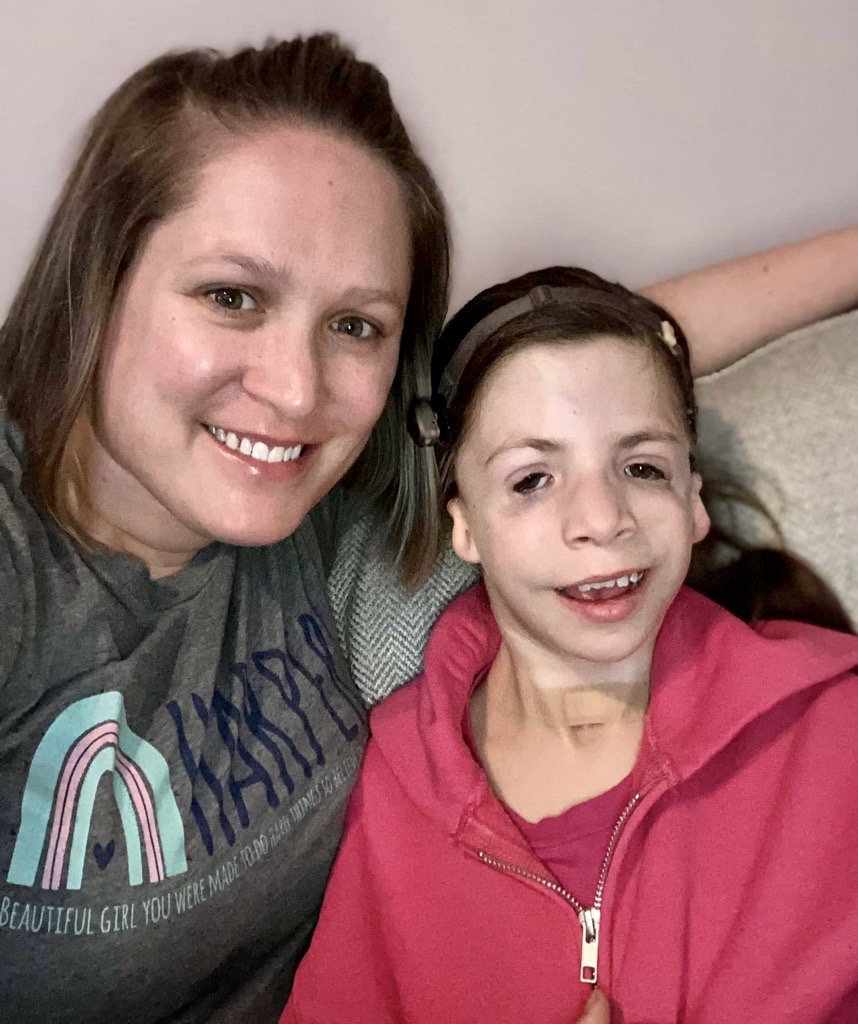Mandibulofacial Dysostosis with Microcephaly (MFDM)


about condition
Mandibulofacial Dysostosis with Microcephaly (MFDM) is a syndrome caused by genetic variant changes in the EFTUD2 gene, and is characterized by developmental delay with head and face malformations. Affected individuals are usually born with a small head that does not grow at the same rate as the body (progressive microcephaly). Intellectual disability and developmental delay can be mild, moderate or severe. Aside from head and face malformations, other areas of the body are often affected.
symptoms
Characteristics and symptoms may include:
- Smaller head
- Midface underdevelopment
- Blocked or narrow nasal cavities (choanal atresia/stenosis)
- Cheekbone underdevelopment (malar hypoplasia)
- Small low-set, cupped, or malformed shaped outer ears (microtia)
- Malformed/narrow ear canals (atresia)
- Middle ear malformations (conductive hearing loss)
- Opening in roof of mouth (cleft palate)
- Very small/recessed jaw (micrognathia)
- Airway complications (sometimes a need for tracheostomy for breathing)
- Eating and speech difficulties
- Hearing loss often requiring hearing aids or hearing processor devices
- Less common: heart issues, short stature, malformations of the thumbs, trachea and/or esophagus
faqs
Here are some of the most common questions about Mandibulofacial Dysostosis with Microcephaly (MFDM), from its causes and diagnosis to treatment options and outlook.
Very rare. Less than 200 cases are known worldwide. The majority are spontaneous new cases.
Yes. MFDM syndrome occurs at some point in the pregnancy and is caused by a genetic mutation change (now more commonly called a genetic variant) from what is frequently called the MFDM gene. Therefore, a baby born with this syndrome either inherited it from the parent (much less common) or it was a spontaneous occurrence. An individual affected with MFDM has a fifty percent chance of passing it on to any offspring. An affected parent who has unknowingly passed on the syndrome to their child may have been so mild themselves that they were never diagnosed before the birth of their baby.
Unfortunately, there is not enough current research being done for this syndrome. Even though surgeries are often in the child’s future, it is estimated that an affected individual will have a normal life span just as anyone else.
If you have MFDM and know your genetic variant location, your fetus can be tested for the same family variant to determine if positive for the syndrome. If you do not know your variant location, other testing (ultrasounds, etc.) can be done to look for risk factors such as cleft issues or malformed external ears. While any testing may tell you if your baby will have MFDM, it cannot tell you the specific features or severity. Extra amniotic fluid (polyhydramnios) can sometimes be present during pregnancy for various reasons, but also due to the fetus not being able to swallow sufficiently; this is often a reason for more in-depth testing. However, since not enough is known about this syndrome, babies can at first be diagnosed with another condition called Treacher Collins syndrome due to the clinical similarities. Further exams will help clarify the correct condition and severity, while genetic testing can identify other family members who may also be affected (rare with this syndrome).
To date, there is only one known gene responsible:
- Mandibulofacial Dysostosis with Microcephaly; gene EFTUD2; chromosome 17; dominant
Other names include: MFDM syndrome, Growth delay-intellectual disability-mandibulofacial dysostosis-microcephaly-cleft palate syndrome, Mandibulofacial dysostosis-microcephaly syndrome, Mandibulofacial dysostosis, Guion-Almeida type.
Treatment is focused on function and correcting facial structures. This can involve craniofacial surgery for enlarging the airway and procedures such as cleft palate repair. A child with MFDM may see different specialties and doctors during their lifetime which include a developmental pediatrician, reconstructive plastic surgery, ophthalmology, pulmonology, otolaryngology (ENT), orthodontics, dentistry, occupational therapy, speech therapy, clinical psychology and neurology.
here when you need us
Whether you’re looking for the right provider, ready to make an appointment, or need care right now—we’re here to help you take the next step with confidence.
